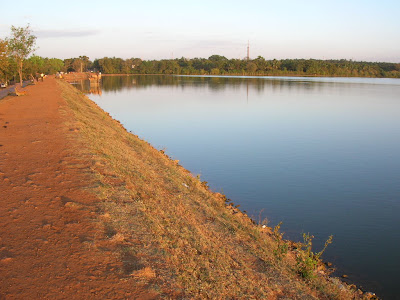The King's Ring by
Theodore Tilton
Once in Persia reigned a king,
who upon a signet ring,
Carved a maxim, strange and wise,
when held before his eyes,
Gave him console at a glance,
fit for every change and chance
Solemn words, and these were they:-
"EVEN THIS WILL PASS AWAY."
Trains of camel, through the sand,
brought him gems from Samarcand;
Fleets of galleys over the sea,
brought home pearls to rival these,
But he counted little gain treasures of the mine or main;
"What is wealth?" the king would say:
"EVEN THIS WILL PASS AWAY."
Mid the pleasures of his court,
at the zenith of their sport,
When the palms of all his guests
burned with clapping at his jests;
Seated midst the figs and wine,
said the king:-"Ah friends of mine,
Pleasures come but not to stay.
"EVEN THIS WILL PASS AWAY."
Woman, fairest ever seen,
was the bride he crowned his queen,
Pillowed on the marriage bed
whispering to his soul, he said:-
"Though no monarch ever pressed
fairer bosom to his breast,
Mortal flesh is only clay:-
"EVEN THIS WILL PASS AWAY."
Fighting on the furious field,
once a javelin pierced his shield:
Soldiers with a loud lament,
bore him bleeding to his tent.
Groaning from his tortured side,
"Pain is hard to bear," he cried.
But, with patience, day by day,
"EVEN THIS WILL PASS AWAY."
Towering in public square,
forty cubits in the air,
Stood his statue carved in stone,
and the king, disguised, unknown,
Gazed upon his sculptured name, and
he pondered, `what is fame?'
Fame is but a slow decay:-
"EVEN THIS WILL PASS AWAY."
Struck with palsy, sere and old,
waiting at the gates of gold,
Said he with his dying breath,
"Life is done but what is Death?"
Then as answer to the king,
fell a sunbeam on his ring,
Showing by a heavenly ray,
"EVEN THIS WILL PASS AWAY."
.........
 This waterbody is a lifeline for people & cattle of Kelgeri village. Buffaloes come here for a mandatory dip during midday i.e. in between their grazing sessions.
This waterbody is a lifeline for people & cattle of Kelgeri village. Buffaloes come here for a mandatory dip during midday i.e. in between their grazing sessions.

 Do check out the stone inscription about this manmade waterbody at this blog post- Kelageri Lake.
Do check out the stone inscription about this manmade waterbody at this blog post- Kelageri Lake.





































